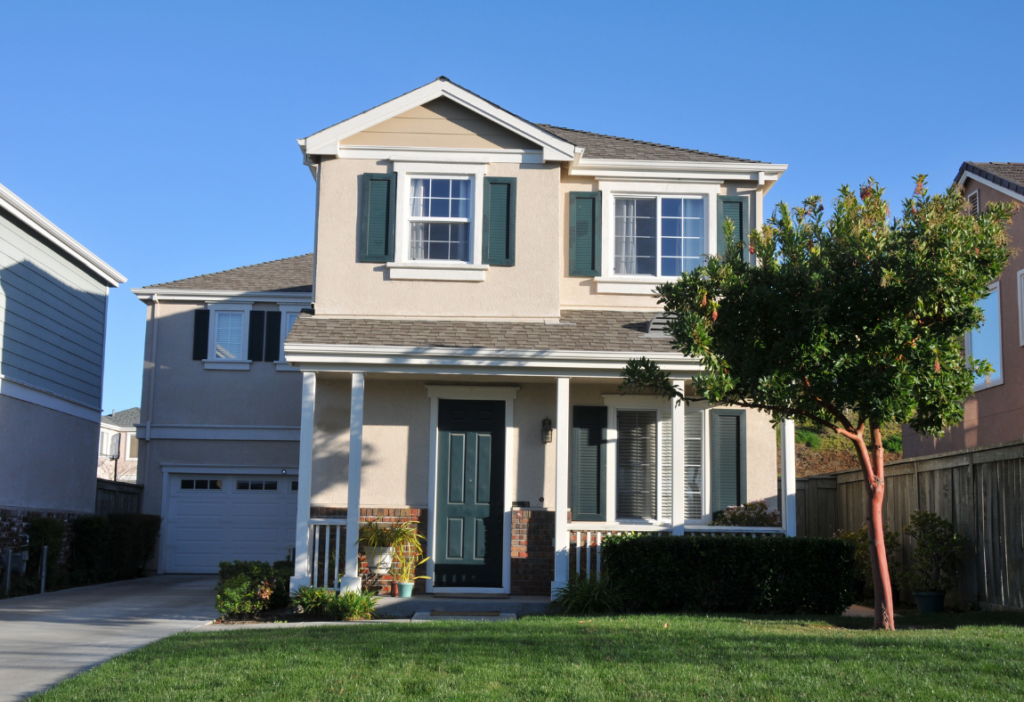Does Homeowners Insurance Cover Water Damage?
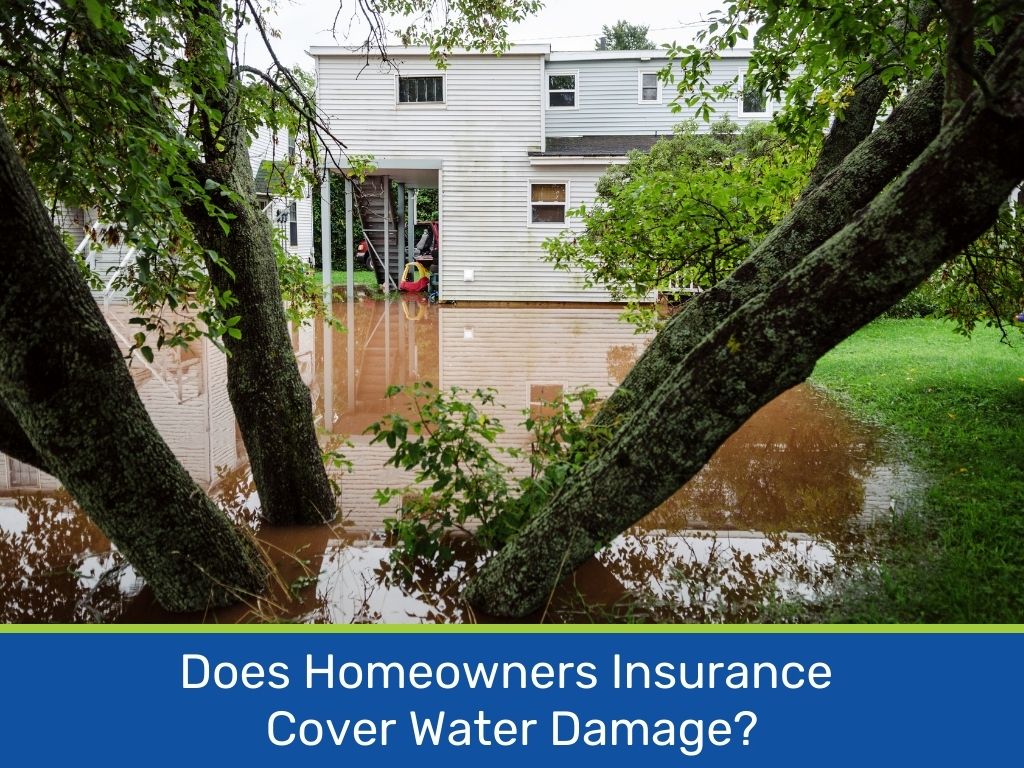
Have you experienced water damage to your home? Are you unsure about the extent of coverage provided by your homeowner’s insurance policy for water damage incidents?
Homeowners insurance serves as a financial safety net, offering protection to the most significant investment for many individuals – their homes. Comprehensive in nature, this type of insurance typically covers damage to the property and belongings due to a wide range of incidents. However, the extent of coverage can sometimes be a complex issue, especially when it comes to water damage.
While some instances of water damage might be covered by a standard homeowner’s insurance policy, others might not be, leaving homeowners to bear the brunt of the repair costs. This article aims to shed light on those specifics, helping homeowners navigate the often-confusing waters of insurance coverage.
Types of Water Damage
There exist several types of water damage that homeowners may encounter, the understanding of which proves crucial when making insurance claims.
Here are the common types of water damage:
- Burst Pipes: Burst pipes occur when water pressure increases drastically or when pipes freeze and expand, causing them to rupture.
- Flooding: Flooding can result from extreme weather conditions, overflowing rivers or lakes, or problems with plumbing systems within the home.
- Roof Leaks: Roof leaks contribute to water damage over time. Water seeps into the home as roofing material deteriorates, causing significant damage.
- Sewer Backups: Sewer backups can cause extensive damage to homes and are often not covered by standard homeowner’s insurance policies.
Understanding the specific nature of these types of water damage is crucial for homeowners when making insurance claims. Insurance policies vary in coverage, and differentiating among these types will help determine the most suitable coverage options and navigate the claim process more effectively.
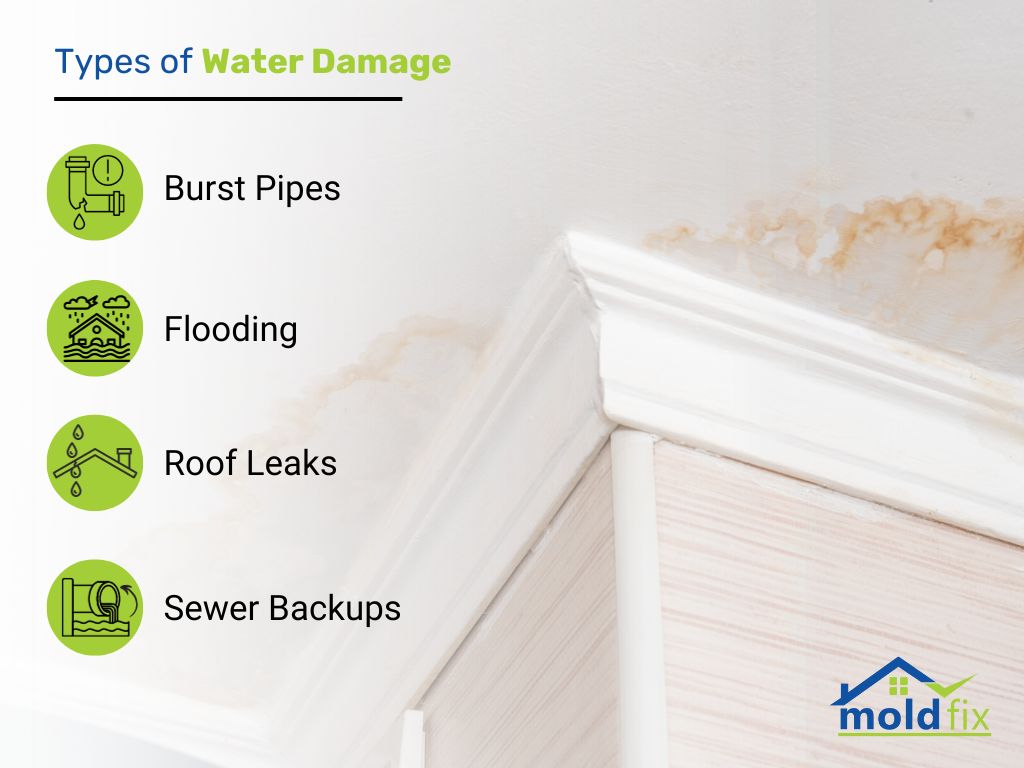
Common Inclusions
Homeowner’s insurance policies often include certain types of water damage in their coverage. Notably, the coverage generally extends to water damage that is considered ‘sudden and accidental.’ Such incidents might include the bursting of a water pipe or a water heater, which can cause extensive damage to both the structure of a home and the personal belongings within it. These types of ‘sudden and accidental’ incidents are typically covered by the standard homeowner’s insurance policy.
Structure Coverage
If the structure of a home has been damaged due to water-related incidents like a burst pipe or a water heater rupture, coverage is usually provided. It applies to the repair or replacement of the physical structure of the home, including walls, floors, and built-in appliances, up to the limit specified in the policy.
Personal Belongings Coverage
Similarly, personal belongings damaged due to sudden and accidental water damage are protected under the standard homeowner’s insurance policy. This includes items such as furniture, electronics, clothing, and other personal items. It is important to note that the coverage limit for personal belongings is separate from the one for the structure of the home, and homeowners should ensure they have adequate coverage for their valuable possessions.
Additional Living Expenses Coverage
Should a covered water damage incident make a home uninhabitable during repairs or rebuilding, homeowners insurance steps in to cover the additional living expenses. These expenses can include hotel bills, restaurant meals, and any other costs that are above your usual living expenses, allowing homeowners to maintain their standard of living even in the face of unexpected disaster.
It should be noted, however, that homeowners insurance does not typically cover all types of water damage. For example, damage due to flooding, sewer backups, and lack of maintenance are generally not included. Therefore, it is crucial for homeowners to thoroughly understand their policy, considering additional coverages if necessary.
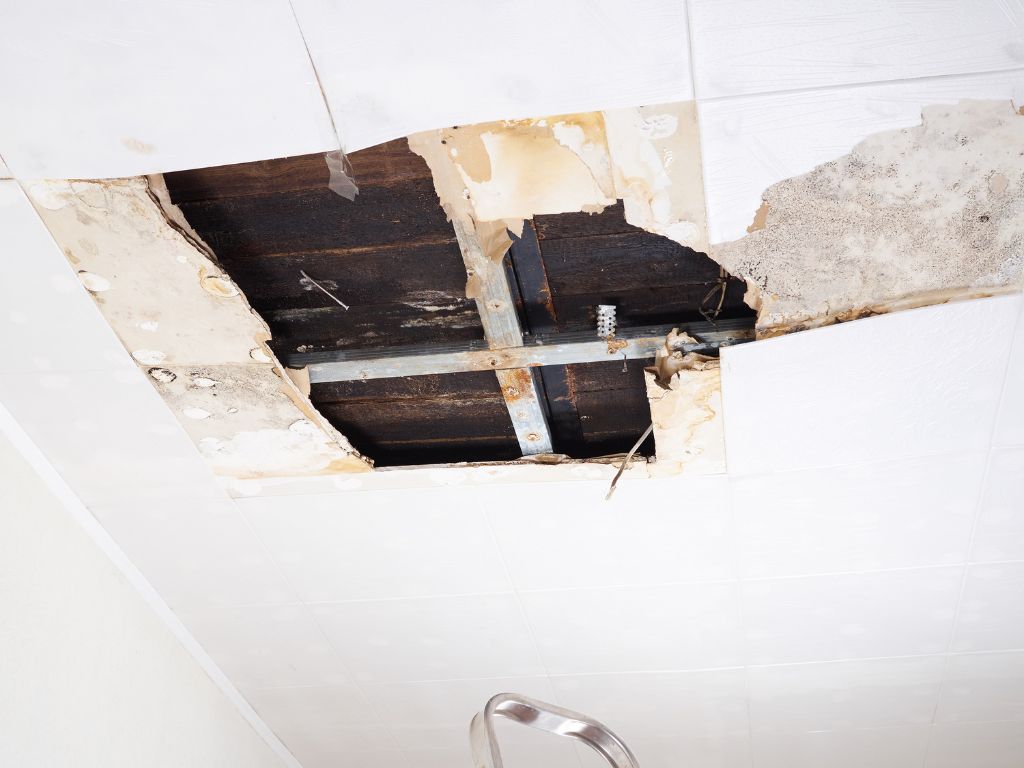
Exclusions and Limitations
Not all water damage incidents are considered equal in the eyes of an insurance company. Certain situations may lead to denial of coverage due to exclusions and limitations outlined in your homeowner’s insurance policy. Understanding these exclusions is critical to managing expectations when filing a claim.
- Flood Damage:
While it might seem logical that home insurance would cover flood damage, often, this is not the case. Floods from natural disasters, overflowing bodies of water, or even excessive rainfall often fall under a policy exclusion. Coverage for such events typically requires a separate flood insurance policy.
- Sewer and Drain Backups:
Damage caused by the backing up of sewers or drains is usually excluded from most standard homeowner’s insurance policies. In many cases, homeowners must purchase additional coverage to protect against this type of damage.
- Maintenance Issues:
Homeowners are expected to maintain their property to avoid preventable damage. Consequently, any water damage resulting from poor maintenance, such as ongoing leakage, seepage, or related deterioration, is typically not covered by insurance. Regular maintenance, including prompt repair of known leaks and replacing aging components of the home’s water system, is essential for coverage.
- Intentional Acts:
Any water damage resulting from deliberate actions by the homeowner will not be covered by the policy. Insurance is in place to cover unforeseen accidents and not intentional damage.
- Water Damage from War or Nuclear Hazard:
Although unlikely, water damage resulting from war, nuclear hazard, or similar events are generally excluded from coverage under standard homeowner’s insurance policies.
In conclusion, while homeowner’s insurance offers substantial protection against water damage, it is by no means a catch-all solution. Understanding the policy’s exclusions and limitations is essential, and additional coverage may need to be considered to ensure complete protection. Always consult with an insurance professional to fully understand the extent of your coverage and explore all available options.
Prevention and Mitigation
Preventing water damage is an important part of maintaining a home. The following steps may be taken to mitigate the risk of water damage:
- Regular Inspections: Routine inspections of the home’s plumbing system, the roof, and other areas prone to water damage can help identify potential problems before they become serious issues.
- Maintenance: Regular maintenance of the home’s water system, including replacing old and worn-out components, is crucial. This includes things like regularly cleaning gutters and downspouts and ensuring appropriate drainage around the home.
- Installation of Water Sensors: Water sensors can be installed in areas susceptible to water damage such as basements, bathrooms, and near major appliances. These devices will alert homeowners to the presence of excess water.
- Flood-Proofing Measures: For homes in flood-prone areas, measures such as installing flood guards for doors and making sure sump pumps are in working order can be beneficial.
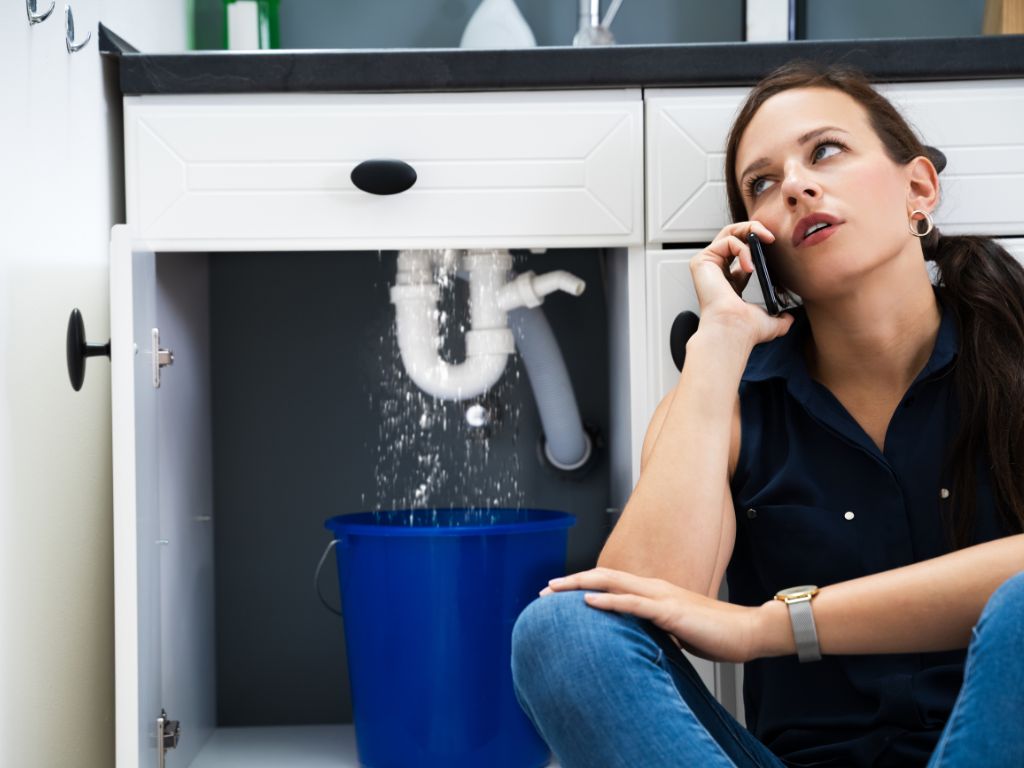
In the unfortunate event of a water damage incident, swift action is essential to minimize damage and expedite claim processes. Here is what can be done:
- Act Quickly: Time is of the essence in case of water damage. The sooner the cleanup starts, the better. This includes stopping the source of the water, if possible, and removing any water or damp items.
- Document the Damage: Before cleaning up, it is important to photograph and document the damage as thoroughly as possible for insurance claims.
- Contact Your Insurance Company: Notify your insurance company about the incident as soon as possible. Provide all the necessary details and documentation to ensure a smooth claims process.
- Professional Cleanup: Consider hiring a professional water damage restoration company. They have the expertise and equipment to properly clean up and restore your home.
By being proactive in preventing water damage and taking swift action when it does occur, homeowners can protect their homes and ensure that they get the most out of their insurance policies.
Reviewing Your Policy
Regular review and update of homeowners insurance policies is highly recommended to ensure apt coverage for your home. A yearly examination of your policy allows you to adjust the coverage according to any changes that might have occurred, such as renovations, purchase of high-value items, or alterations to the weather patterns in your region. By carefully scrutinizing your policy, you can identify any exclusions or limitations in your coverage concerning water damage, thus allowing you to take necessary steps for additional protection if required. A thorough review not only strengthens your understanding of the policy but also ensures your policy remains updated and commensurate with your current needs.
Claims Process
Filing a successful water damage claim requires an understanding of the policy’s coverage, deductibles, and limitations. The following steps can help homeowners navigate the claims process smoothly:
- Contact Your Insurance Company: As soon as possible, report the incident to your insurance company. They will provide you with instructions on filing a claim.
- Document Everything: Keep records of all the damage, repair costs, and any other relevant information. Take photos or videos to document the extent of the damage.
- Be Honest: Always be truthful when providing information about the incident. Failure to disclose pertinent information can result in a denied claim.
- Cooperate with Adjusters: Insurance adjusters play a crucial role in determining coverage for water damage claims. Cooperate with them and provide any additional information or documentation they may require.
- Maintain Copies of Everything: Keep copies of all the documents related to your claim, including estimates, receipts, and correspondence with the insurance company.
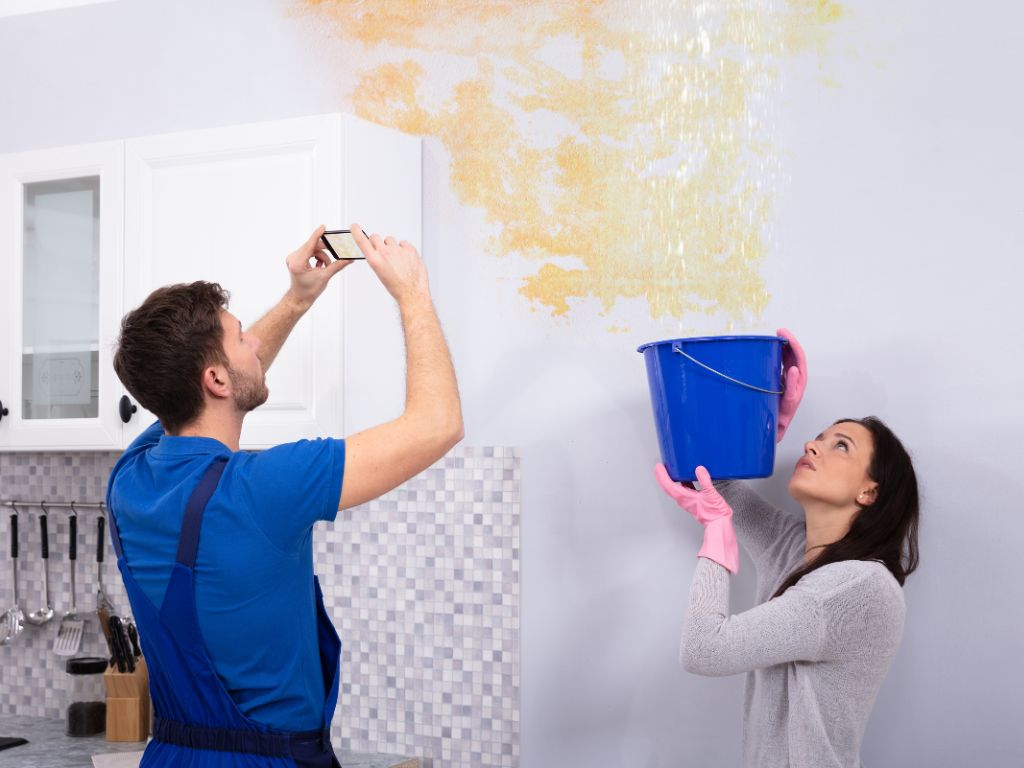
How to Get Insurance to Pay for Water Damage
The process of getting insurance to pay for water damage involves understanding the extent of coverage offered by your policy, diligently documenting the damage, and cooperating with your insurance company throughout the claims process. The key is to be proactive in preventing water damage, regularly reviewing your policy for any exclusions or limitations, and taking swift action when it does occur. By following these steps and working closely with an insurance professional, homeowners can ensure that their homes are adequately protected against the devastating effects of water damage.
Conclusion
In summary, understanding the types of water damage, what is typically included in standard homeowner’s insurance policies, and what may be excluded or limited is essential for homeowners to make informed decisions about their coverage. By taking preventative measures and knowing how to navigate the claims process effectively, homeowners can protect their homes and possessions from the financial implications of water damage incidents. Remember to regularly review your policy, be honest and thorough when filing a claim, and seek professional guidance to ensure adequate coverage for your home.
Don’t let water damage catch you off guard! If you’re in need of water damage restoration service in Corona and nearby cities, look no further than Mold Fix. Our team of experts is dedicated to swiftly and efficiently restoring your home to its pre-damaged condition. Remember, when it comes to water damage, time is crucial, so don’t hesitate – reach out to us today at (949) 449-5949!
